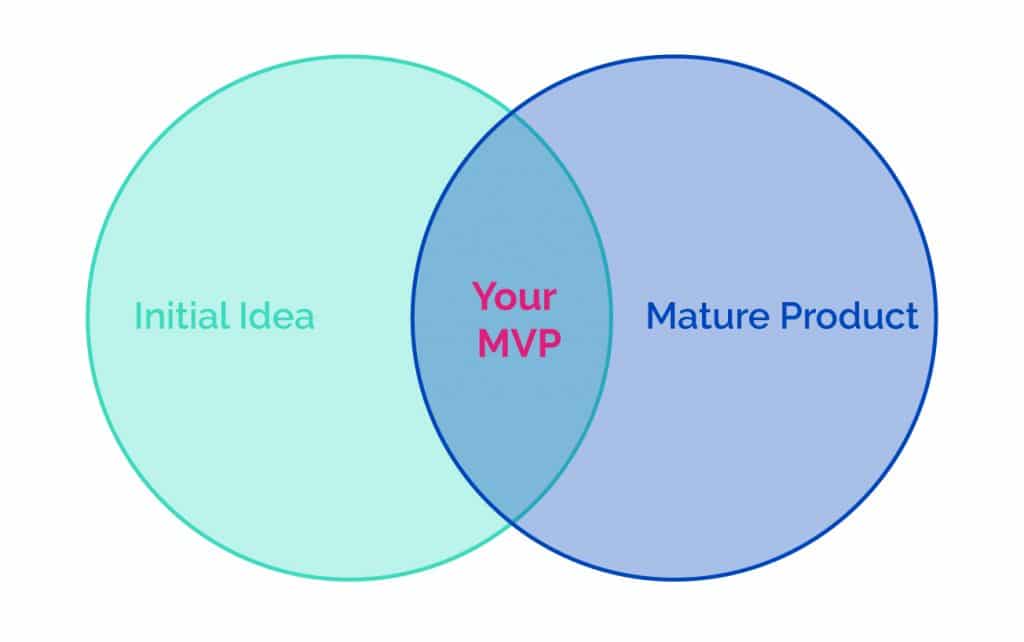How to design the best minimum viable product
(MVP) for your business
16/05/2019
Reading Time: 4 minutes
A start-up or a large enterprise, bringing a new idea to life as a product to the market is always a big risk. Especially if you’re sure that you can successfully implement it. As a founder, you’re the one who will take the risk. This Genome report states that 74% of startups fade away because of scaling in the wrong phase or time.
The success of a business doesn’t depend on only the quality of the idea. A bad business plan can cause 3 out of 4 startups to fail. If you want to be an entrepreneur with a successful product, you need to reduce your risks. You can achieve this by creating a minimum viable product, also known as an MVP.
Before releasing a full-fledged product, getting your audience’s feedback is critical. You can avoid failures and large capital losses by creating a minimum viable product, also known as MVP.
Here is a guide for you on how to develop and design an MVP. But first;
Don’t miss out the latestCommencis Thoughts and News.
What is an MVP?
A minimum viable product (MVP) is the minimised featured design of a new product. It is used to gather feedback, especially from early adopters, to maximise the satisfaction of your target end-user with your final product.
An MVP can also be described as a development method of a prototype-like product with only the core features, which is designed just to learn more about both customers and the market you wish to enter. The minimum viable product aims to build an agile process where the product is released, tested, and improved in further development rounds.

Eric Ries, the renowned author of The Lean Start-Up describes an MVP in this way: “As you consider building your own minimum viable product, let this simple rule suffice: remove any feature, process or effort that does not contribute directly to the learning you seek.”
The Benefits of Having an MVP
As we dive deeper on the consumer benefits of having an MVP, you should first keep in mind that it also positively impacts the company, designers and investors. Here’s how:
- You can lead your team’s learning about the product according to the needs and demands of the customer.
- You can understand any further developments required to complete the product.
- You can reduce time wastage, especially for the development team, by focusing on the core features to launch your product.
- You can launch your MVP into the market faster, which allows you to start collecting customers and insights instead of wasting time on developing the final product without any hard data.
- A faster market launch also allows you to remain one step ahead of your competitors.
How to Plan and Design Your MVP?
Now that we’re clear about the definition and the benefits of the MVP, here are the steps to design it.
1. Identify the needs
Clarify WHY you are doing this project. Who needs it? What is your long-term goal for this product? What are the criteria for success for your product in the market? Answering those questions will allow you to refocus on the main purpose for your product.
2. Determine the opportunities
Identify your target users, try to map their user journeys, and list out the actions users take to reach your product’s end goal. After finding these actions, determine the pain points (or gain points) of each action and see if you can find any opportunities in them.
3. Analyse your competitors
Especially if there are similar products with the same benefits in the market. You have to be aware of them to differentiate and build a unique perception for your product. Even if you trust the uniqueness of your product, it’s still worth determining your close circle of competitors.
4. Decide on your core features
Upon deciding your final core features, check them against your opportunities list and then prioritise them by considering their possible breakdown points. This will be really helpful if you add those to your roadmap as well. Just keep in mind that according to the Standish Group Chaos report, 64% of features are actually never used at all. So always try to keep it simple!
5. Test, learn and repeat
After defining all the above 4 aspects, we can now jump into the development and then the testing phases. If your product has been developed according to the road map above, it’s time for you to take it into alpha or beta testing. Alpha testing is also known as the “close friends release” phase. You share the alpha product test with people who are close to you. Their feedback should lead you directly into beta testing. Beta testing period takes place for approximately 1 or 2 weeks — but this with real users. During beta testing, you take real user feedback and make improvements to your product if necessary.
You then run your tests again, learn again and improve your product more according to your customers’ needs and demands. Then repeat!
The main value of MVP is that it helps startups and scale-ups to create, test and adopt new ideas more safely. Building an MVP helps to avoid wasting their money, effort and time while developing a new product. And the most amazing part is that during the testing phase, your MVP will help you generate even more ideas according to your target audience’s behaviours.




